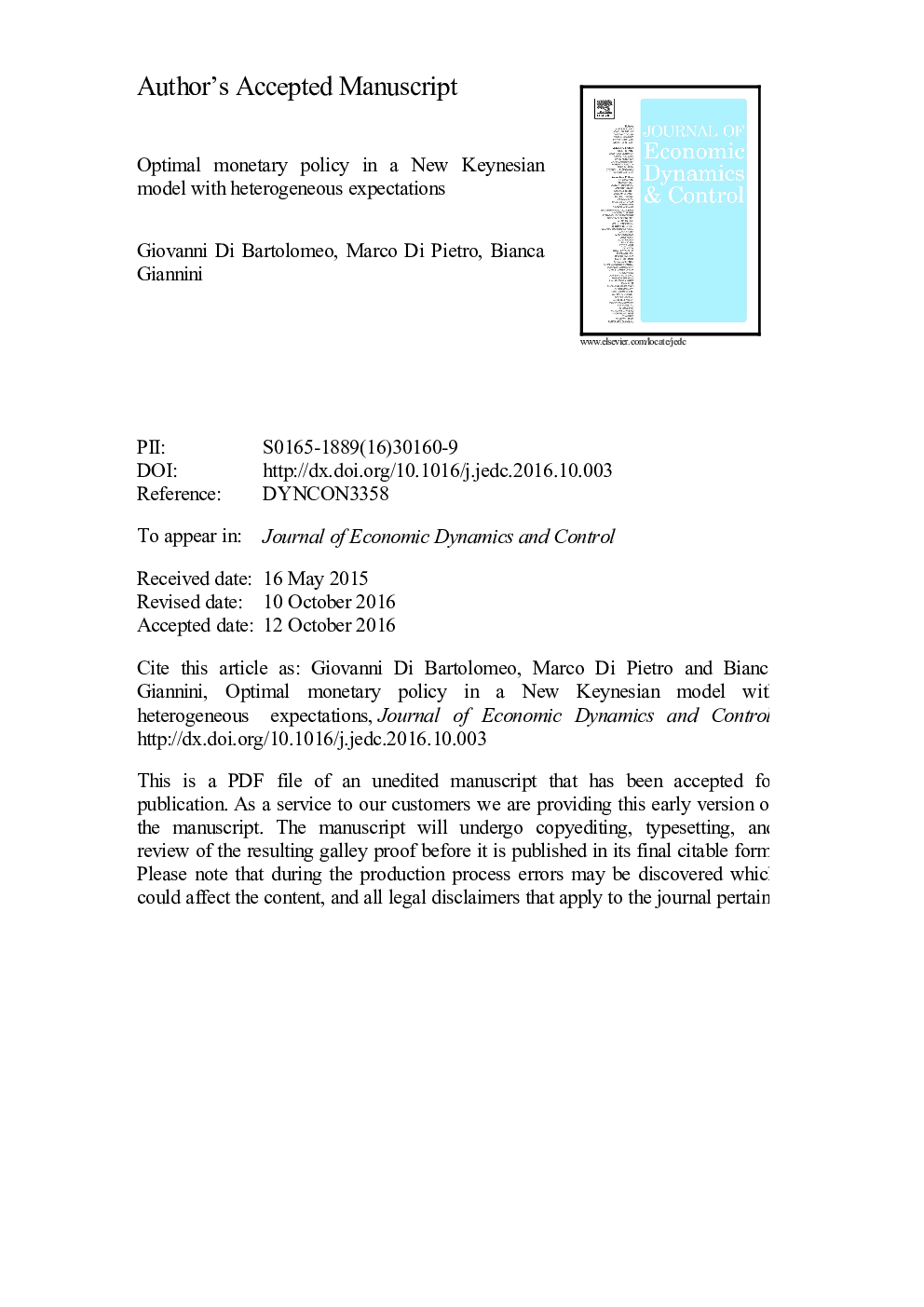| Article ID | Journal | Published Year | Pages | File Type |
|---|---|---|---|---|
| 5098110 | Journal of Economic Dynamics and Control | 2016 | 31 Pages |
Abstract
In a world where expectations are heterogeneous, what is the design of the optimal policy? Are canonical policies robust when heterogeneous expectations are considered or would they be associated with large welfare losses? We aim to answer these questions in a stylized simple New Keynesian model where agents׳ beliefs are not homogeneous. Assuming that a fraction of agents can form their expectations by some adaptive or extrapolative schemes, we focus on an optimal monetary policy by second-order approximation of the policy objective from the consumers׳ utility function. We find that the introduction of bounded rationality in the New Keynesian framework matters. The presence of heterogeneous agents adds a new dimension to the central bank׳s optimization problem-consumption inequality. Optimal policies must be designed to stabilize the cross-variability of heterogeneous expectations. In fact, as long as different individual consumption plans depend on different expectation paths, a central bank aiming to reduce consumption inequality should minimize the cross-sectional variability of expectations. Moreover, the traditional trade-off between the price dispersion and aggregate consumption variability is also quantitatively affected by heterogeneity.
Related Topics
Physical Sciences and Engineering
Mathematics
Control and Optimization
Authors
Giovanni Di Bartolomeo, Marco Di Pietro, Bianca Giannini,
